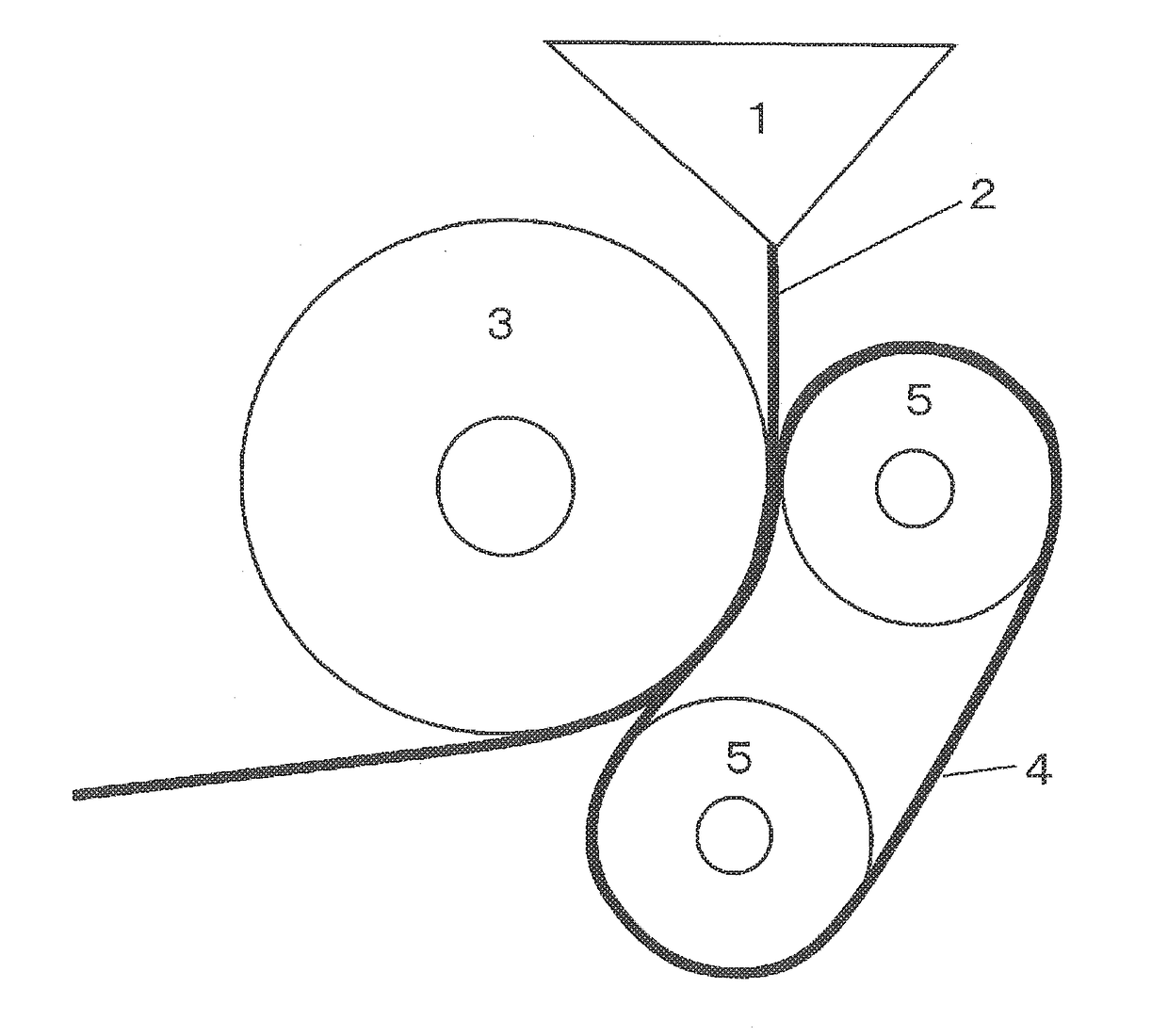Method for producing multilayer coated film
- Summary
- Abstract
- Description
- Claims
- Application Information
AI Technical Summary
Benefits of technology
Problems solved by technology
Method used
Image
Examples
example 1
[0143]Step (1): Using a film Meyer bar coating apparatus, a wet coat composed of the above paint (A-1) was formed on one surface of a both-surface easy-adhesion-treated, biaxially stretched polyethylene terephthalate film “KFL12W-50” (trade name) from TEIJIN LIMITED having a thickness of 50 μm so that the coat thickness after complete curing was 0.03 μm (30 nm).
[0144]Step (2): The wet coat composed of the paint (A-1) obtained above was preliminarily dried at 80° C. and then subjected to 300 mJ / cm2 irradiation using an ultraviolet irradiation apparatus from EYE GRAPHICS CO., LTD. including a high pressure mercury lamp as a light source in which a 254 filter was installed, and preliminarily cured. The coat composed of the paint (A-1) reached a set-to-touch state.
[0145]Step (3): Using a film Meyer bar coating apparatus, a wet coat composed of the above paint (B-1) was formed on the preliminarily cured coat composed of the paint (A-1) obtained above so that the coat thickness after comp...
example 2
[0156]Step (5): Using a film Meyer bar coating apparatus, a wet coat composed of the above paint (C-1) was formed on one surface of a both-surface easy-adhesion-treated, biaxially stretched polyethylene terephthalate film “KFL12W-50” (trade name) from TEIJIN LIMITED having a thickness of 50 μm so that the coat thickness after complete curing was 0.03 μm (30 nm).
[0157]Step (6): The wet coat composed of the paint (C-1) obtained above was preliminarily dried at 80° C. The coating composed of the paint (C-1) reached a set-to-touch state.
[0158]Step (7): Using a film Meyer bar coating apparatus, a wet coat composed of the above paint (B-1) was formed on the preliminarily dried coat composed of the paint (C-1) obtained above so that the coat thickness after complete curing was 0.04 μm.
[0159]Step (8): The laminate obtained in the above step (7) was preliminarily dried at 80° C. and then subjected to 300 mJ / cm2 irradiation using an ultraviolet irradiation apparatus including a high pressure ...
example 3
[0195]Using the poly(meth)acrylimide resin of the above (a-1) and an apparatus including a 50 mm extruder (equipped with a double flight screw of L / D=29 and CR=1.86), a T die having a die width of 680 mm, a mirror-finished roll, and a mirror-finished belt, a film having a thickness of 250 μm was formed under the conditions of temperature settings from the extruder to the T die of C1 / C2 / C3 / AD / D1 to D6=280 / 300 / 320 / 320 / 320 to 320° C., a T-die lip opening of 0.5 mm, a screw rotation speed of 90 rpm, a mirror-finished roll surface temperature of 140° C., a mirror-finished belt surface temperature of 120° C., a mirror-finished belt pressing force of 1.4 MPa, and a take-up speed of 5.6 m / min. A film having good surface appearance was obtained. The film obtained above was passed through a heating furnace set at a temperature of 170° C. at a line speed set so that 5 minutes was required for the film to pass from the inlet to the outlet. For the obtained film, the above tests (iii) to (viii) ...
PUM
| Property | Measurement | Unit |
|---|---|---|
| Wavelength | aaaaa | aaaaa |
Abstract
Description
Claims
Application Information
 Login to View More
Login to View More - R&D
- Intellectual Property
- Life Sciences
- Materials
- Tech Scout
- Unparalleled Data Quality
- Higher Quality Content
- 60% Fewer Hallucinations
Browse by: Latest US Patents, China's latest patents, Technical Efficacy Thesaurus, Application Domain, Technology Topic, Popular Technical Reports.
© 2025 PatSnap. All rights reserved.Legal|Privacy policy|Modern Slavery Act Transparency Statement|Sitemap|About US| Contact US: help@patsnap.com


